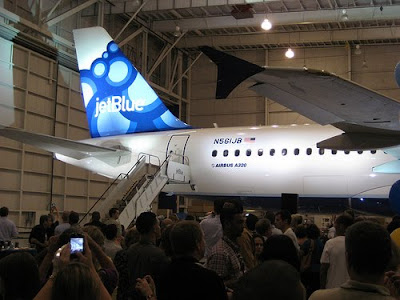by B. N. Sullivan

On the afternoon of June 4, 2007, a Cessna Citation 500 aircraft
crashed into Lake Michigan shortly after departure from Milwaukee. The flight was part of a medical mission to transport a human organ for a transplant patient. On board were
two pilots, and four passengers who were members of the University of Michigan transplant team; all six perished in the accident. Today the U.S. National Transportation Safety Board (NTSB) released its report on that accident, citing as probable cause "the pilots’ mismanagement of an abnormal flight control situation through improper actions, including failing to control airspeed and to prioritize control of the airplane, and lack of crew coordination."
The Citation (registration N550BP) was operated by Marlin Air as a charter under the rules of 14 CFR Part 135. The NTSB report states: "Contributing to the accident were Marlin Air’s operational safety deficiencies, including the inadequate checkrides administered by Marlin Air’s chief pilot/check airman, and the Federal Aviation Administration’s failure to detect and correct those deficiencies, which placed a pilot who inadequately emphasized safety in the position of company chief pilot and designated check airman and placed an ill-prepared pilot in the first officer’s seat."
The Flight
According to the NTSB report, the aircraft had departed General Mitchell International Airport, Milwaukee, WI en route to Willow Run Airport, near Ypsilanti, MI. Shortly after rotation, the captain, the flying pilot, called for yaw damper activation and turned the airplane to the assigned heading. The cockpit voice recorder (CVR) transcript indicated that the captain commented that he was "fighting the controls" -- a phrase that was repeated several times during climbout.
Less than a minute after rotation, the captain is heard saying, "I’m fighting the controls. It wants to turn left hard." The first officer asked about trim settings. The captain replied that there was something wrong with the rudder trim, but that he did not know the reason. Less than two minutes after rotation, the CVR records the captain saying, "Tell 'em we got to come back and land," and then, "She's rolling on me. Help me, help me."
The captain then told the first officer to pull the autopilot circuit breaker; the first officer responded “where is it?” By that time, the aircraft had leveled off and its air speed was about 270 knots.
The crew contacted Milwaukee approach, declared an emergency, and asked to land on "any runway". Around that time, the aircraft began a descending left turn back toward the airport. The airspeed remained about 250 knots. The captain relinquished control of the aircraft to the first officer, saying, "You hold it, I’m gonna try to pull circuit breakers." Moments later, barely three minutes after takeoff, the aircraft crashed into Lake Michigan.
NTSB Findings
The accident aircraft did not have a flight data recorder, so the NTSB could not determine the exact nature of the initiating event of the accident. However, said investigators, "the evidence indicated that the two most likely scenarios were a runaway trim or the inadvertent engagement of the autopilot, rather than the yaw damper, at takeoff."
Quoting the NTSB:
The Board further noted that the event was controllable if the captain had not allowed the airspeed and resulting control forces to increase while he tried to troubleshoot the problem. By allowing the airplane's airspeed to increase while engaging in poorly coordinated troubleshooting efforts, the pilots allowed an abnormal situation to escalate to an emergency.
Therefore, the NTSB concluded that if the pilots had simply maintained a reduced airspeed while they responded to the situation, the aerodynamic forces on the airplane would not have increased significantly. At reduced airspeeds, the pilots should have been able to maintain control of the airplane long enough to either successfully troubleshoot and resolve the problem or return safely to the airport.
The report goes on to fault Marlin Air for operational safety deficiencies that contributed to the accident.
Results from the Board's investigation indicated that the captain did not adhere to procedures or comply with regulations, and that he routinely abbreviated checklists. Subsequently, the NTSB concluded that the pilots' lack of discipline, lack of in-depth systems knowledge, and failure to adhere to procedures contributed to their inability to cope with anomalies experienced during the accident flight.
The accident captain was Marlin's company chief pilot and check airman. The NTSB report states:
If the Federal Aviation Administration guidance regarding check airman appointments and oversight contained procedures for principal operations inspectors to follow (such as heightened surveillance) in cases where review of the pilot’s background or performance reveals negative information, checkride failures, or other performance-related deficiencies, the agency might prevent inadequate and/or undisciplined pilots from being appointed or retained as check airmen.
The investigation found that the captain’s pilot certificates "had previously been revoked because of a felony conviction involving the illegal transport of drugs into the United States," although the FAA had reissued his pilot certificates, and they were valid at the time of the accident. Among the 16 safety recommendations to the FAA contained in this accident report was this one:
Revise check airman approval and oversight procedures to incorporate heightened surveillance during a probationary period and at other times as warranted for check airmen whose background evaluation ion uncovers a history of criminal convictions, certificate revocations, checkride failures, or other performance-related deficiencies. (A-09-XX)
Here are the links to the
Narrative Report, Findings and Safety Recommendations and the
Flight Path Animation and CVR Transcript for this accident.
 The Cessna Aircraft Company recently announced that Citation Sovereign Part 135 operators will now be able to conduct certain over-water flights, specifically Los Angeles to Hawaii, without requiring FAA Extended Operations (ETOPS) approval.
The Cessna Aircraft Company recently announced that Citation Sovereign Part 135 operators will now be able to conduct certain over-water flights, specifically Los Angeles to Hawaii, without requiring FAA Extended Operations (ETOPS) approval. 







